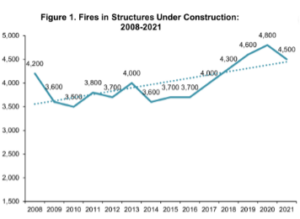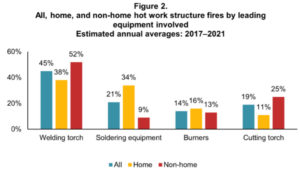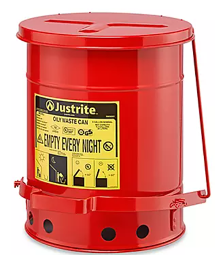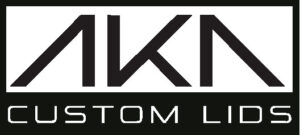 By Matt Morley, Kraemer Brothers
By Matt Morley, Kraemer Brothers
Since 2008, the NFPA has reported an upward trend in the precedence of fires in structures under construction. Between 2016 and 2020, they estimate firefighters responded to more than 11 fires daily, resulting in an annual average of five deaths and over 370 million dollars in property damage. As contractors, we should all be familiar with the common causes of these fires, and more importantly, what we can do on our job sites to avoid becoming another statistic. To determine the best preventative measures, we must first identify the common causes of these events.
 Hot Work
Hot Work
OSHA defines hot work as, “work involving electric or gas welding, cutting, brazing, or similar flame or spark-producing operations.” These activities introduce an ignition source, that without proper precautions, can lead to an incipient stage fire shortly after, or even hours after, the work is complete. If you are a contractor who regularly performs these activities, a hot work permit program is a must. OSHA’s Welding and Cutting standard, 1926.352, consists of a lengthy list of requirements during these activities. A permit process simply assures each applicable preventative measure is in place, along with some best practices.
Heating Equipment
According to the NFPA, the month of January contributes the highest number of fires in structures under construction, with 11% of the yearly total. Temporary heating devices, either electric or fuel gas, each present a significant source of heat and ignition. Always ensure you are familiar with your specific equipment by reviewing the manufacturer’s literature for required clearance distances, to the device itself and affiliated flue or chimney. For fuel gas heaters, consider leak testing fitting and supply lines before and shortly after putting your equipment into service. An additional consideration for ventilation and air quality should be made when using fuel gas-supplied heating equipment for the health and safety of those working in the space.
Housekeeping
A lack of housekeeping on a project at first glance can be indicative of a poorly run project overall. From a fire prevention perspective, a lack of housekeeping often means an accumulation of scrap lumber, empty boxes, pallets, and trash, which all lead to an increased fire load. Cluttered job sites may also hinder the speed and efficiency of the tradespeople’s ability to safely exit the structure in the event of an emergency. Lastly, if you have operations, like painting, which create solvent waste, or rags soaked with oil or flammable liquids, they must be disposed of in a self-closing, fire-resistant container. These materials can spontaneously combust without notice.
Cooking and Smoking
According to the NFPA, the leading cause of fires in construction projects, although minor, is cooking equipment such as hot plates, grills, or stoves. Tradespeople smoking on projects also provides an uncontrolled ignition source, as cigarette butts tend to make their way into wall cavities, waste piles, and trash cans. As a general contractor, it’s best practice to forbid both these activities beyond certain designated areas, or simply altogether. The type of building construction on a given project (i.e. wood frame) may ultimately factor into this decision-making process.
Temporary Electrical and Lighting
Electricity always carries the potential to produce heat and sparks, especially when not installed properly, poorly maintained, or used inappropriately. Overloading circuits, through the use of splitters, power strips, or excessive amounts of extension cords, can demand too much power from its source and will cause a fire. Consider hanging all extension cords off the ground (by non-conductive means) to avoid cords being subject to crushing or cutting damage. Exposed conductors will also cause fire, so immediately take frayed or damaged cords out of service.
Special thanks to NFPA for their help with this article.







 By Matt Morley, Kraemer Brothers
By Matt Morley, Kraemer Brothers Hot Work
Hot Work





